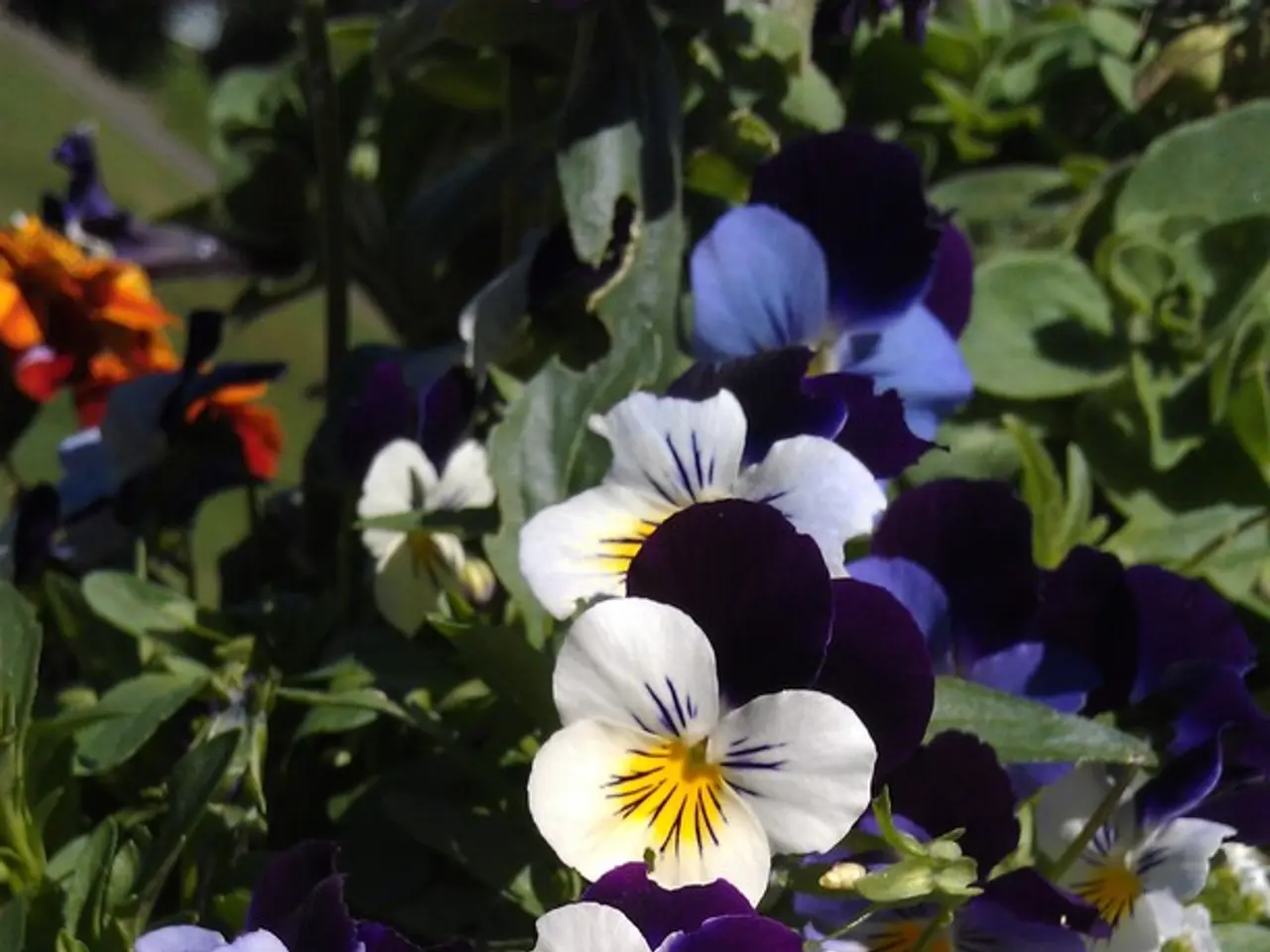Exploring the Culinary and Horticultural Potential of Calendula, Nasturtium, Basil, and Dill
Harvesting Delicious Blossoms and Autumnal Herbs for Consumption
Robin Trott, a University of Minnesota website educator, shares insights on how to use these four herbs and flowers in both cooking and gardening.
Calendula (Pot Marigold)
This herb boasts a somewhat spicy and tangy flavor, often likened to saffron in color and mild flavor. In the kitchen, Calendula petals can add a tangy note to salads and soups, or be used in saffron-like dishes to impart a subtle flavor. The petals can also be incorporated into baked goods, like shortbread cookies with lime, for a floral twist, or added to fruit salads for visual appeal and a mild spiciness.
Gardeners will appreciate Calendula's ability to thrive in full sun with well-drained soil. It blooms profusely in spring and fall, making it easy to harvest fresh petals. Moreover, Calendula is used medicinally, with flowers being harvested for skincare products like infused oils and salves.
Nasturtium
Nasturtium's peppery flavor is reminiscent of watercress or mild radish. In the culinary realm, both leaves and flowers can be used in salads to add a spicy kick and vibrant color, such as in a nasturtium salad with citrus vinaigrette. The flowers make a beautiful garnish or addition just before serving to preserve freshness.
Nasturtiums thrive in poor to average soil with full sun or partial shade. They grow quickly, can be trailing or bushy, and attract beneficial insects. Leaves and flowers are edible and best used fresh.
Basil
Basil's sweet and aromatic flavor, with notes of clove and pepper, is a staple in Mediterranean dishes. It's classic in pesto, salads, and tomato-based recipes. Basil also works well in fruit salads combined with melon, nectarine, and mint for a fresh, aromatic flavor. Basil can be used fresh or dried, but fresh preserves the best flavor.
Basil prefers warm, sunny spots and rich, well-drained soil. It is sensitive to cold and should be harvested regularly to encourage bushy growth. Growing purple and green varieties can add colorful interest to the garden and dishes.
Dill
Dill's fresh, slightly sweet and tangy flavor, with a subtle anise or licorice note, is commonly used with fish, in pickles, and to flavor dressings and sauces. Dill adds freshness to salads and complements creamy or citrusy dressings. Both leaves and seeds are used, with leaves best fresh.
Dill prefers full sun and well-drained soil. It grows tall and may benefit from staking. Dill self-seeds readily, so you can have a continual supply.
Summary Table
| Herb/Flower | Flavor | Culinary Uses | Gardening Tips | |---------------|-------------------------------|---------------------------------------|--------------------------------------| | Calendula | Spicy, tangy | Salads, soups, saffron-like dishes, baked goods, garnish | Full sun, well-drained soil, blooms in spring/fall | | Nasturtium | Peppery | Salads, garnishes | Poor soil tolerated, sun/partial shade, fast-growing | | Basil | Sweet, aromatic | Pesto, salads, tomato dishes, fruit salads | Warm sun, rich soil, sensitive to cold, regular harvest | | Dill | Fresh, slightly anise-like | Fish, pickles, dressings, salads | Full sun, staking possible, self-seeds |
This guide maximizes the flavor and visual appeal of these plants while helping you successfully grow them in your garden. Incorporate edible flowers like calendula and nasturtium just before serving to keep them fresh and vibrant, while herbs like basil and dill can be harvested regularly for continuous use. Pinch flowers of basil plants to boost leaf growth and harvest in the morning. Dill pairs well with cucumbers in soups or pickles, can be added to potato salad, fish, or yogurt dips, and its flowers can be used in vinegar or as a garnish. Basil comes in sweet, spicy, and citrusy varieties with green or purple foliage. The article encourages readers to harvest herbs for culinary use and to share their experiences with the community.
The guide showcases the culinary and visual utilization of Calendula, Nasturtium, Basil, and Dill, demonstrating their spicy, peppery, sweet, and slightly anise-like flavors. Additionally, by growing these herbs and flowers in home-and-garden settings, one can easily incorporate food-and-drink recipes like salads, soups, and baked goods with these edible plants. gardeners can also enjoy the lifestyle aspect of using these plants in their home-and-garden for skincare products and gardening tips.




